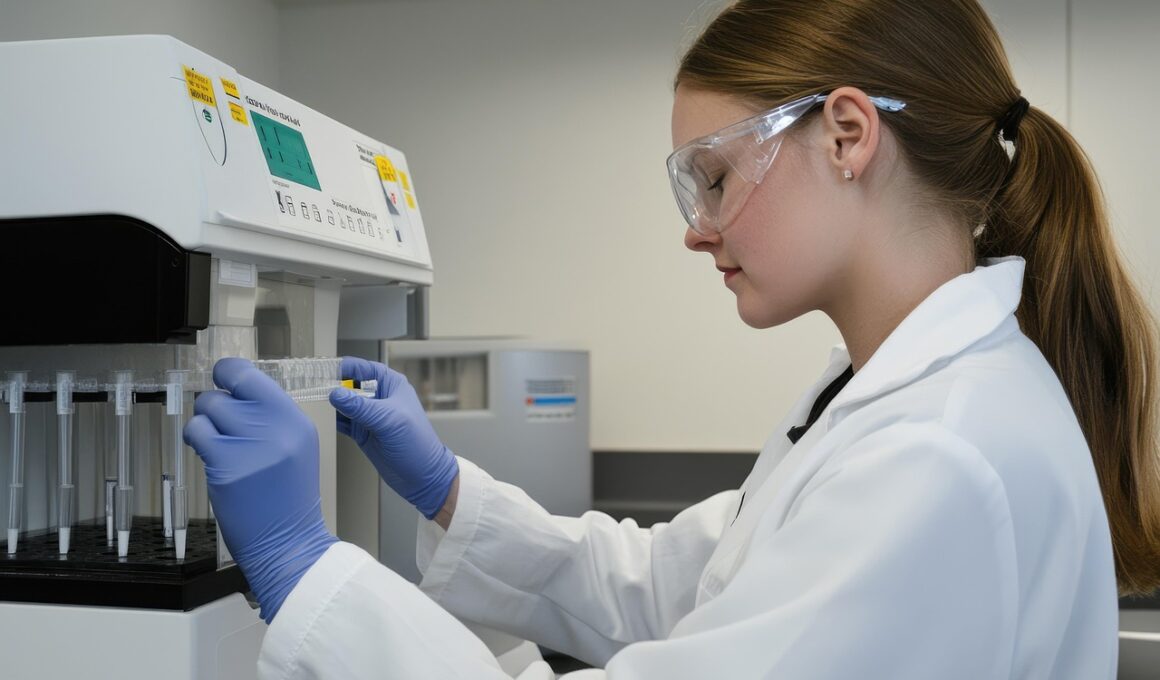Technology Advances: New Methods to Improve VO2 Max Testing
Vo2 max testing has traditionally been a methodical and precise means of assessing cardiovascular fitness. With advancements in technology, this method has evolved significantly. Various new devices and software now facilitate more accurate and less invasive testing processes. These innovations are geared towards providing sports scientists and athletes with immediate feedback on performance metrics. Devices that incorporate sensors and wearable technology are gaining popularity, allowing for real-time monitoring during training sessions. One significant advantage of these modern methodologies is decreased costs and increased accessibility for athletes at all levels. This makes it easier for recreational runners to professional athletes to achieve insight into their physical capabilities without the need for expensive lab-based tests. Furthermore, new data analytics technologies assist researchers in interpreting the vast amounts of data generated during tests. The application of artificial intelligence in analyzing VO2 max can yield personalized training recommendations. By harnessing these advancements, coaches and athletes can optimize their training plans and improve overall endurance more effectively than ever before. As technology continues to evolve, the future of VO2 max testing will undoubtedly become even more precise and user-friendly.
Endurance sports such as running, cycling, and swimming largely rely on VO2 max as a determinant of performance. Athletes are always looking for ways to enhance their performance metrics, and VO2 max improvement is often a primary focus. Coaches and fitness experts emphasize the importance of identifying VO2 max values and monitoring them over time to track progress. In the past, this meant relying on standardized tests in lab environments. However, recent technological innovations allow individuals to measure VO2 max more conveniently in real-world settings. Portable metabolic carts, once limited to clinical settings, are now becoming more common at training facilities and sports events. Athletes can complete exhaustive efforts without traveling to laboratories, saving both time and resources. Furthermore, improvements in respiratory analysis and heart rate monitoring have streamlined the assessment process. These methods reduce variability in results while ensuring athletes receive the most accurate readings of their fitness levels. Additionally, integrating software analysis provides coaching staff with easily understandable data visualization, which simplifies performance comparison. With these developments, understanding one’s potential has become a significant advantage for athletes looking to succeed in their chosen sports.
Innovative Technologies in VO2 Max Testing
Several innovative technologies are reshaping VO2 max testing. These breakthroughs address the limitations of traditional assessment methods, particularly in terms of convenience and accuracy. Wearable devices such as smartwatches and heart rate monitors now offer estimated VO2 max measurements, making it accessible to a broader range of athletes. These devices are typically equipped with advanced sensors that capture real-time physiological responses during exercise. By using algorithms that account for various variables, these wearables provide a quick estimation of VO2 max, allowing athletes to monitor their own fitness levels during training sessions. Furthermore, mobile applications have been developed to complement these devices. They not only collect Vo2 data but also analyze trends, providing insights about potential improvements over time. This immediate access to tracking allows athletes to adapt their training intensively, targeting improvements effectively. Additionally, cloud-based platforms enable athletes and coaches to review extensive training databases. By utilizing this shared data, they can create personalized training plans that facilitate optimal performance. As the use of such technologies proliferates, the accuracy of VO2 max estimation continues to improve, leading to better training outcomes.
As the science behind aerobic fitness evolves, researchers are delving deeper into VO2 max protocols. High-intensity interval training (HIIT), for instance, has become a popular method for enhancing maximal oxygen uptake. HIIT sessions are quicker, yet they stimulate greater cardiovascular adaptations than traditional steady-state training. This has encouraged further investigation into how different combinations of training modalities can affect the expression of VO2 max in various athletes. Recent studies indicate that individual responses to training can vary greatly, depending on genetic predisposition and other factors. With a more intelligent understanding of these variations, athletes can tailor their training programs to suit their specific physiological needs. Additionally, technology plays a pivotal role in these studies, allowing increased data collection during exercise. Emerging wearable technology and mobile health apps enable continuous monitoring of various metrics such as heart rate, oxygen consumption, and recovery. Consequently, athletes can limit injury risks while maximizing performance results. Thus, as research progresses, athletes will benefit from protocols based on robust scientific evidence, ensuring their training is effective. Personalized approaches will ultimately usher in new paradigms for endurance training and performance optimization.
The Role of Mobile Applications in VO2 Max Testing
Mobile applications have become essential tools for athletes focusing on endurance training. They provide not just training plans but also insights into physiological parameters like VO2 max. Many of these applications interface seamlessly with wearable devices, amplifying their capability. Athletes can sync their exercise data easily, allowing app algorithms to analyze performance metrics, including estimated VO2 max. The results provide a simplified analysis of an athlete’s endurance capacity and offer tailored training recommendations. Some apps even offer virtual coaching, enabling athletes to receive guidance based on their performance data. This accessibility promotes a level of self-coaching previously unattainable, creating a more independent approach to training. Additionally, social features allow users to connect with peers and share progress, enhancing motivation. Motivating athletes by tracking friends’ performance fosters a sense of community, encouraging consistent training. As technology integrates deeper into everyday fitness regimes, mobile apps continue introducing innovative features to enhance user experience. Whether competitive or recreational, users of these technologies benefit from rich data insights that support their journey towards higher levels of performance and extended endurance.
Researchers are increasingly examining how genetics influence VO2 max and endurance performance. Genetic testing, paired with advanced VO2 max assessment techniques, provides a comprehensive picture of an athlete’s potential. By identifying specific genetic markers, professionals can better understand an individual’s response to various training regimens. For instance, some athletes may genetically predispose to respond better to endurance training than others. This scientific understanding allows for more targeted training, as well as recovery protocols. Implementing the appropriate training interventions based on genetic profiling helps maximize performance outcomes while keeping the risk of injury at bay. In tandem with emerging technologies in VO2 max measurement, genetic insights can revolutionize how athletes approach their conditioning. Furthermore, continuous developments in bioinformatics enable the integration of DNA sequencing data into training plans. Thus, athletes have access to personalized training approaches grounded in scientific evidence. The synergy of technology and genetics will pave the way for next-generation training protocols. As we advance, this emergence will raise the bar for what athletes can achieve in terms of endurance, ultimately influencing their competitive edge.
Conclusion and Future Directions for VO2 Max Testing
As we look toward the future of VO2 max testing and endurance training, the evolution of technology will undoubtedly play a significant role in reshaping this landscape. The advent of wearable technology and advanced data analytics has already begun changing how VO2 max is measured and utilized. Athletes can now access more personalized training regimens than ever before, making tangible improvements in their endurance capabilities. Continuous improvements in testing accuracy and methodologies will further refine how coaches and athletes approach training. Moreover, integrating genetic insights into endurance training will illuminate pathways previously obscured, fostering individualized strategies for performance enhancement. Expect innovations that incorporate virtual training environments, allowing athletes to simulate competitive scenarios, leveraging the data acquired from various metrics. As the integration of technology into sports science deepens, collaboration between researchers, athletes, and technologists will be paramount. The drive for enhanced performance through better understanding and testing methods will continue to inspire advancements, ultimately leading to a new frontier in endurance training. With these exciting developments ahead, athletes can anticipate significant strides in their ability to maximize VO2 max, enhancing not just their endurance but their overall sporting experience.


